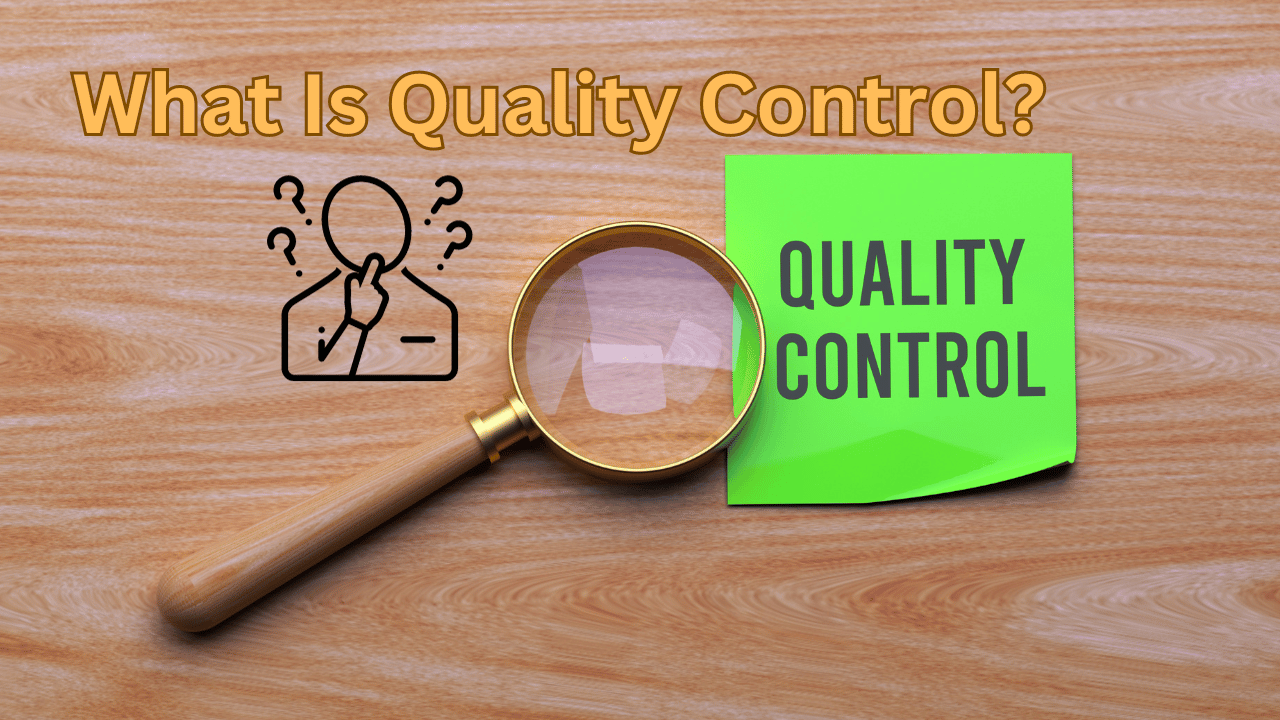Introduction
In today’s fast-paced and competitive business world, ensuring the quality of products and services is of paramount importance. Quality control is a fundamental aspect of any successful organization, encompassing a wide range of processes and practices aimed at delivering products or services that meet or exceed customer expectations. In this article, we will delve into the world of quality control, exploring its definition, significance, methods, and how it contributes to overall business success.
What Is Quality Control? | Understanding Quality Control
Quality Control Defined
Quality control, often abbreviated as QC, refers to the systematic process of monitoring and assessing various aspects of a product or service to ensure that it consistently meets predefined quality standards. It involves not only identifying defects or deviations but also taking corrective actions to rectify them.
Key Components of Quality Control
Quality control typically encompasses several key components, including:

- Inspection
The initial step in quality control involves inspecting the product or service to identify any defects or deviations from established standards. This can be done through visual checks, measurements, or other evaluation methods.
- Testing
Testing is an essential part of quality control, where products or services are subjected to various tests to determine their performance, durability, and adherence to specifications.
- Documentation
Proper documentation of all quality control processes is crucial. This includes maintaining records of inspections, tests, and any corrective actions taken.
- Process Improvement
Quality control is not a one-time effort but an ongoing process. Organizations strive to continually improve their processes to enhance product or service quality.
Significance of Quality Control
Customer Satisfaction
One of the main reasons for implementing quality control measures is to make sure customer satisfaction. When customers receive products or services that consistently meet their expectations, they are more likely to remain loyal to the brand.
Cost Reduction
Effective quality control can lead to cost reductions in the long run. By identifying and rectifying defects early in the production process, organizations can avoid costly rework or recalls.
Compliance and Legal Requirements
Many industries have stringent regulations and legal requirements that mandate adherence to specific quality standards. Quality control helps organizations meet these requirements and avoid legal complications.
What are the Methods of Quality Control?
Statistical Process Control (SPC)
SPC involves using analytical techniques to monitor and control processes. It helps in identifying trends, variations, and abnormalities, allowing for timely corrective actions.
Six Sigma
Six Sigma is a data-driven method that aims to reduce defects and variations in processes. It focuses on improving quality through rigorous analysis and problem-solving techniques.
Total Quality Management (TQM)
TQM is a holistic approach to quality control that involves every aspect of an organization. It brings continuous improvement, customer focus, and employee involvement.
Implementing Quality Control
Training and Education
Properly trained and educated employees are essential for successful quality control implementation. They should be aware of quality standards and the importance of their role in maintaining quality.
Advanced Technology
The use of advanced technology, such as automation and artificial intelligence, can enhance quality control processes by increasing efficiency and accuracy.
Feedback Mechanisms
Establishing feedback mechanisms, both internal and external, allow organizations to gather valuable insights into product or service quality and make necessary improvements.
Conclusion
In a world where consumer expectations are continually rising, quality control remains a critical factor in business success. By implementing effective quality control measures, organizations can not only meet customer expectations but also reduce costs, comply with regulations, and improve overall efficiency.
Frequently Asked Questions (FAQs)
Q1. What are the benefits of quality control?
A1. Quality control benefits include improved customer satisfaction, cost reduction, compliance with legal requirements, and enhanced product or service quality.
Q2. Is quality control a one-time effort?
A2. No, quality control is an ongoing process that involves continuous monitoring and improvement of processes.
Q3. What is the role of employees in quality control?
A3. Employees play a crucial role in quality control by adhering to quality standards, participating in training, and actively contributing to process improvement.
Q4. Can technology enhance quality control?
A4. Yes, advanced technology, such as automation and artificial intelligence, can improve the efficiency and accuracy of quality control processes.
Q5. Why is documentation important in quality control?
A5. Documentation is essential in quality control to maintain records of inspections, tests, and corrective actions, ensuring transparency and accountability.









1 thought on “What Is Quality Control?”